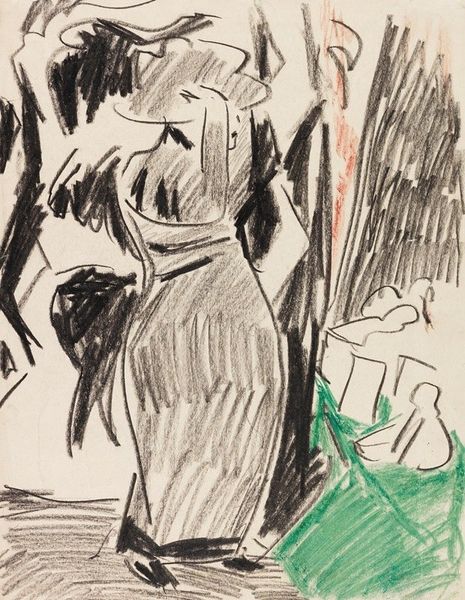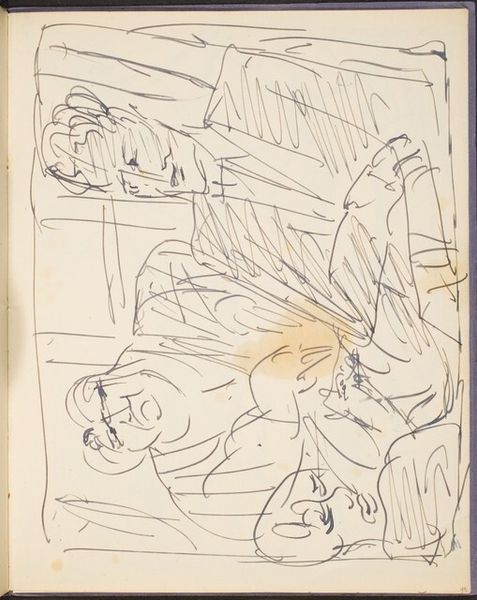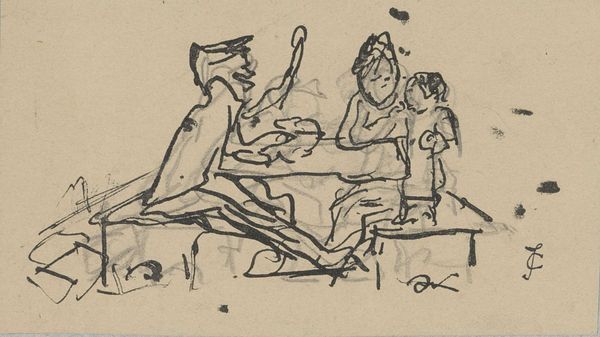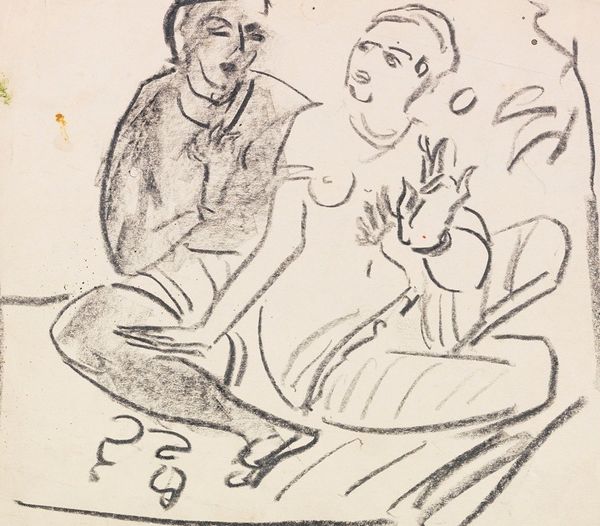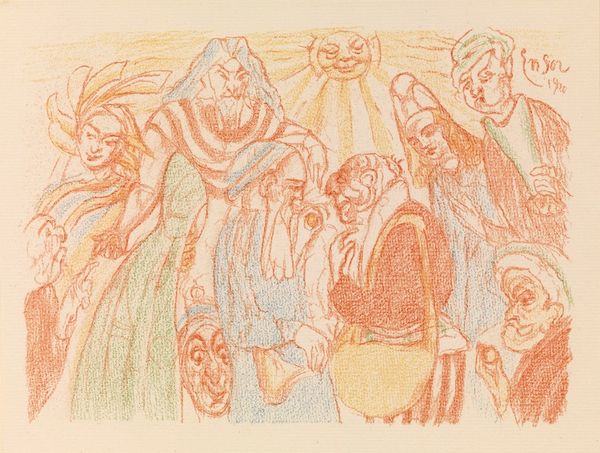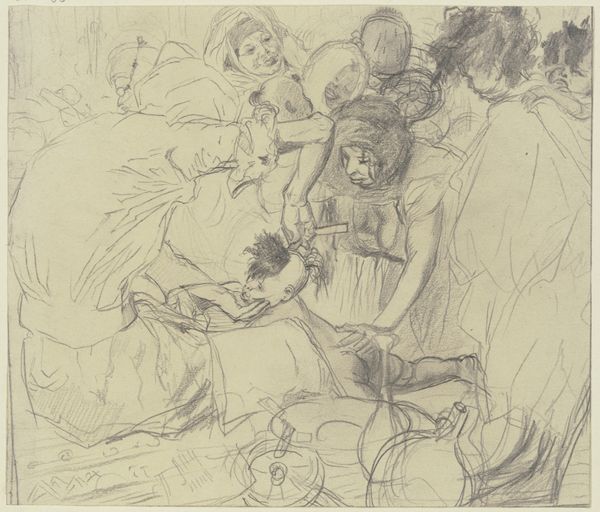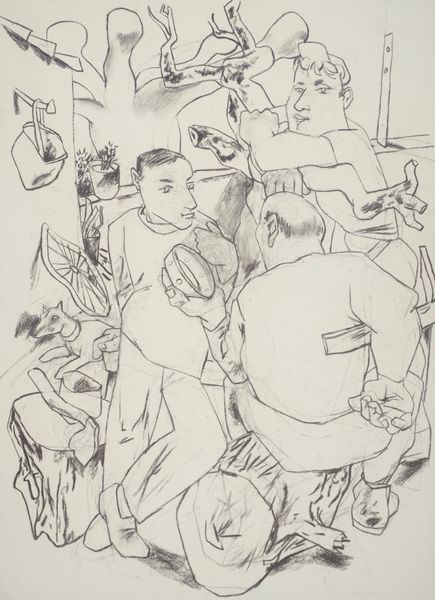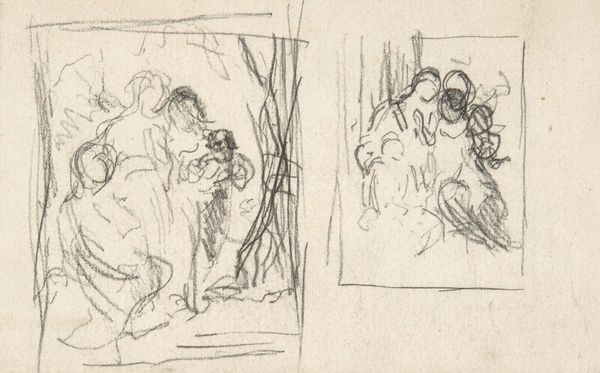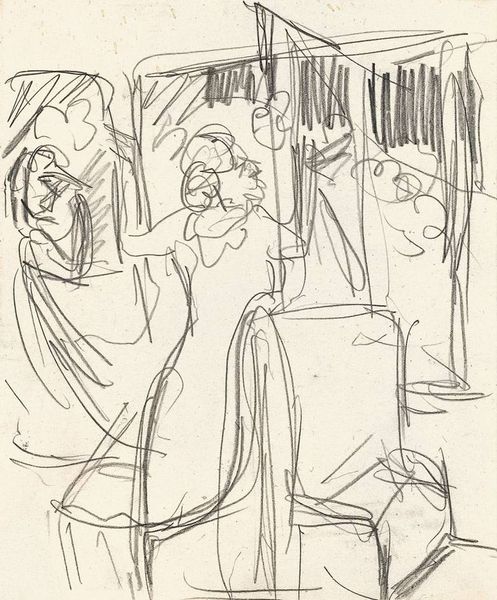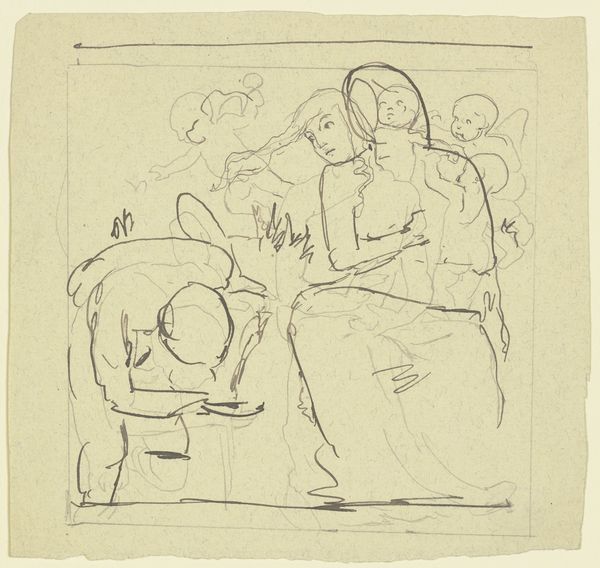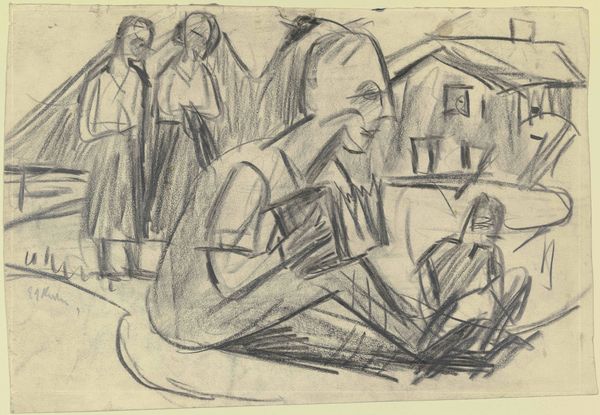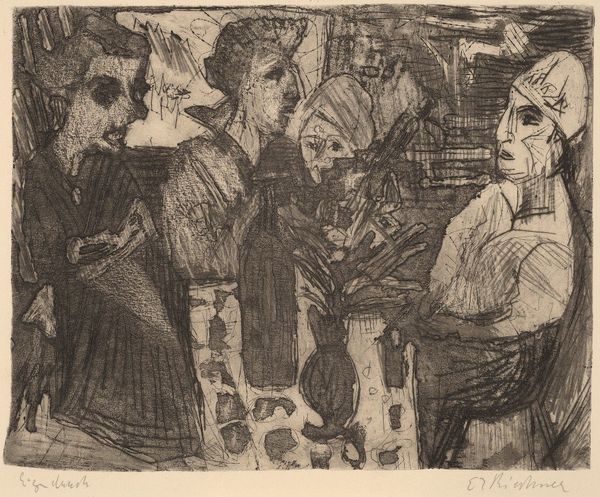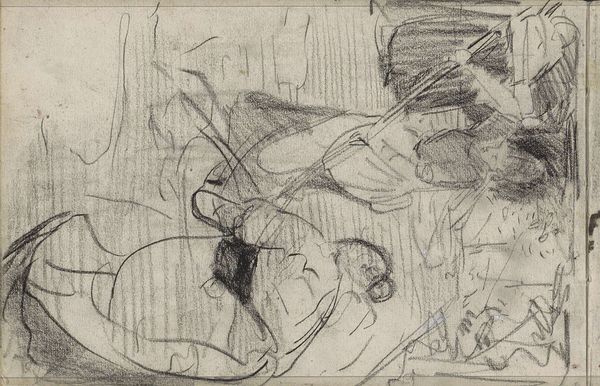
drawing, paper, ink
#
portrait
#
drawing
#
pen sketch
#
figuration
#
paper
#
ink
#
expressionism
#
genre-painting
Copyright: Public Domain: Artvee
Editor: We're looking at "Zwei nähende Frauen am Tisch," or "Two Women Sewing at a Table," a pen and ink drawing on paper by Ernst Ludwig Kirchner, from around 1924. The quick, scratchy lines give it a sense of urgency, almost anxiety. What's your take on it? Curator: That "urgency," as you call it, is key. Consider Kirchner's biography. He was a veteran of World War I, deeply affected by the trauma. The Expressionists sought to portray interior states, not exterior appearances. But they did so within very particular exhibitionary frameworks, with very definite politics around 'authenticity'. The seemingly spontaneous quality of the line actually became a signal of direct access to a raw, unfiltered emotion - what do you think about that notion of "authenticity" here? Editor: That’s interesting. It makes me wonder if the sketchiness is also about capturing a fleeting moment, the everyday lives of these women. Almost like a snapshot. Curator: Precisely. But "snapshot" suggests objectivity, doesn't it? This drawing performs spontaneity but its public and reception hinges on his authorial vision. The work existed in a complex gallery system of early 20th Century Germany - how much of Kirchner’s personal story influenced how the work was viewed at the time? And how does that legacy shape our view of it today? Editor: So, it’s less about the scene itself, and more about how Kirchner filters and presents it through his experiences and within the accepted framework of expressionistic art. Curator: Exactly. The public presentation, its context, is everything. These two women become stand-ins within Kirchner's narrative – a visual manifestation of the artist's anxieties viewed by and sold to a select few. It makes us consider how trauma becomes both deeply personal and strangely marketable. Editor: It’s incredible how much history and context can shift our understanding of what looks like a simple sketch. Curator: Absolutely, and that interplay between individual experience, artistic intention, and public reception is at the heart of understanding art's cultural and historical impact.
Comments
No comments
Be the first to comment and join the conversation on the ultimate creative platform.
